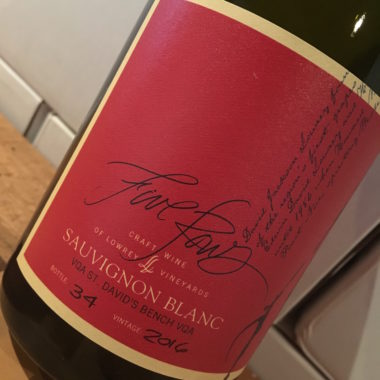2014 Pinot Noir
Production: 143 cases
Aromas – cherry, floral (violet), red licorice (Nibs), truffle, earth, mushroom
Palate – typical “Lowrey terroir” profile of ripe cherry, pleasing acidity and evolved tannic structure
2014 Syrah
Production: 122 cases
Aromas – wild black raspberry, pepper, cooked meat, tobacco
Palate – ripe red fruit (cherry, plum), savoury core, smooth tannins make it hard not to drink right now
2014 Cabernet Sauvignon
Production: 123 cases
Aromas – wild black raspberry, cherry, bell pepper, violet
Palate – cherry flavoured candy, currant, dark chocolate, structural versatility to enjoy now with meats and cheeses or to lay down for another few years
2016 Sauvignon Blanc
Production: 220 cases
Aromas – pineapple, starfruit, grapefruit, peach drink, vanilla bean
Palate – ripe tropical flavours balanced by crisp citrus notes, lingering finish, best enjoyed just below room temperature
2016 Pinot Gris
Production: 110 cases
Aromas – honeydew melon, apricot, whispers of single malt scotch
Palate – full-bodied, balanced, signature Lowrey Pinot Gris texture, tastes like Wilma’s homemade butter tarts
2016 “Jean’s Block” Riesling
Production: 119 cases
Aromas – intense and alluring, floral notes with strong citrus undertones, apple
Palate – zippy acidity, a real depth of flavour, balanced finish, excellent food pairing wine, serve slightly chilled

